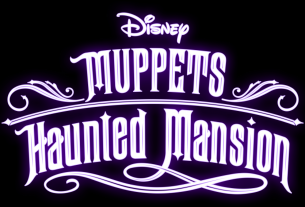 I mentioned in my coverage of the UK Games Expo how much I was looking forward to the arrival of Cubicle 7’s reinvention of my favorite RPG, Warhammer Fantasy Roleplay. Now, another con is around the corner, the inaugural Tabletop Gaming Live!, and it’s just possible I might be able to pick up my own physical copy of the 4th edition of the game. By around the corner, I mean tomorrow; real-life moves faster than writing life!
I mentioned in my coverage of the UK Games Expo how much I was looking forward to the arrival of Cubicle 7’s reinvention of my favorite RPG, Warhammer Fantasy Roleplay. Now, another con is around the corner, the inaugural Tabletop Gaming Live!, and it’s just possible I might be able to pick up my own physical copy of the 4th edition of the game. By around the corner, I mean tomorrow; real-life moves faster than writing life!
In the meantime, those lovely people at Cubicle 7 have allowed me to have a sneaky peek at a PDF version. Here then are 10 great things about Warhammer Fantasy Roleplay.
1. The Cover
Ok, a bit of a cheat, this one. The cover is not important to the game, right? I should know, the cover fell off my first edition copy and I played with it for another 20 years! This cover, though, strikes a glorious balance between the old and new. The artwork has been updated, but anybody who played first edition will be comforted by the familiarity of the old. It’s a great homage. Never has an ax-wielding dwarf felt so homely.
2. Return to the Old World
Yes, I know us older Warhammer players keeping banging on about this, but Games Workshop destroyed the Old World (the original Warhammer Fantasy setting) and have created something new. New and improved? Well, it’s probably too early to say, but for those who spent their formative years adventuring their way down the Reik and finding rotten things in Kislev whilst looking for The Enemy Within, the death of the Old World hit hard. And now it’s back.
Well actually its been back in various forms, particularly on a PC, but this one for me is the biggie. It’s back, fully realized in all its Teutonic glory. As world-building goes, it’s hardly ground-breaking, but I loved it. It represents the evolution of Warhammer and, well, the evolution of me and I can’t wait to jump back in.

3. D100 System
I loved Warhammer’s D100 system when I first played WFRP and I love it now. A D20 is synonymous with roleplaying, but there are few things more satisfying the rolling two D10 and converting them to tens and units. It did have its drawbacks, which the new system looks as though it mitigates, and I can’t wait to do some D100 roleplaying again.
4. So, What Skills Can You Bring to This Job?
Very Strong, Very Resilient, Strike Mighty Blow, and Dance. The skills of somebody who fudged their character generation but wanted to make it look like they hadn’t. The skills system in WFRP was a little nuts—especially if you were playing a non-human because then you were forced to take things you’d never, ever use, like sing or dance, and, perhaps, etiquette.
Nevertheless, the skills were very much part of your character and as your character evolved so did their skillset.
To add some additional depth and flavor to your character’s skills set, this new edition introduces Talents. These are similar to skills, but are more like personal traits, such as Alley Cat, where you gain bonuses in urban environments or Dirty Fighting, where your upbringing has taught you to use every trick in the book. I’m looking forward to seeing how skills and talents interact to produce well-rounded character types.
5. Different Class
There are now many more classes to choose from than the original four: Warrior, Rogue, Ranger, Academic. In addition, there are now Burghers, Courtiers, Peasants, and Riverfolk, all of which add what could be described as Old World charm. I’m looking forward to seeing how this adds flavor to the already evocative careers system. I always loved in WFRP how characters were always more than just adventurers, even if we often only paid lip service to our day jobs.
6. Jobs for Life
Careers have been overhauled, making them longer lasting. The new designers don’t want people flitting through them on their way to becoming an assassin or judicial champion just for those juicy advances. It’s still possible to progress to different careers, but now each career has four levels, with increasingly better bonuses. You can find a job and stick at it.
With career comes status, another new concept in the game. Your lowly Rat-Catcher is never going to be as influential as a Lawyer, but they who rise to the level of “Rat-Catcher Exterminator” are kings among pest controllers. Career exits have been abolished but there are rules governing moving from one career to another, and even how to change class. Perhaps that Rat-Catcher might become a Courtier after all!
The careers page is teeming with flavor text and evocative artwork. I can’t wait to hold the book in my hands and soak it all up in good, old-fashioned paper style! The careers section is where your characters come alive.
7. Advance to Go (Adventuring)
If WFRP had a failing its that advancement was a little too easy. Serious players could very soon max out their improvement possibilities, as XP levels were flat across the game. Now they are stepped. The better you are at something, the more XP you need to spend in order to improve.
The famous advance scheme from the original game has been altered. I am slightly disappointed to see all the +10s, +20s, and +30s have gone, but the new system is more streamlined. The more levels you have in a career, the more stats you can improve. There’s no limit to how many you can have either. Limits are built in by the increasing amount of XP required to boost a stat.
8. Fight, Fight, Fight!
Combat appears to have been massively overhauled in the game. It’s now an opposed role! This will get around the problem of low skilled characters taking 20 minutes to score a hit. It’s quite a departure from the old way in which combat worked and I’ll be interested to see how it translates to the game. It should definitely speed things up.
Note: Although the roll is opposed, it’s not a “win you hit, lose your opponent hits” mechanic. If you win, you hit (and gain an advantage) and if you lose, your opponent gains an advantage. They can use this advantage when they try to hit you back.
Advantage is the mechanic to cover all those things in combat, like surprise, cover, and prone. It’s also the new embodiment of the Warhammer rule, that if you’re winning combat, you’re pressing your opponent, and so things get a little easier for you.
9. Ye Gods!
I guess it’s because I played the game for so many years, but I loved the religious pantheon in Warhammer and now its back. Back, fleshed out, and expanded. Under new rules, characters might even be able to invoke their god’s name and call upon them for aid with all-new miracles.
Mercifully, so far, the Chaos gods appear to be taking a back seat in WFRP. They get barely more than a couple of paragraphs between them. I hope this remains the way. Chaos in the game is so much better working in the shadows, hinted at and unknown, than it was in the excesses of later Warhammer expansions. GW double became a bit chaos obsessed and it’s nice to see it take a back seat. A small number of creatures and servants of chaos do make an appearance in the Bestiary, however.

10. 8 is the Magic Number
The colors of magic are back, and they too tie in with later Warhammer lore than the original WFRP rulebook. The 8 magic lores return with the names I only know, after my years in the wilderness, as corresponding to the Mortal Realms in Warhammer: Age of Sigmar. Hedge wizards and witchcraft are still in. Yay! After only a cursory glance, magic doesn’t appear to have changed massively but I’m looking forward to delving deeper.
11. Giving the Book to My Children
My final (bonus!) reason for looking forward to getting my hands on the book proper is that I can shove it under my children’s noses. It looks to be a work of art, but a PDF is not the thing life-long hobbies are made of. My children may well turn their back on the passions of my youth, but I hope this wonderful tome will inspire them to at least roll up a character and head out on a small adventure.
There’s so much other stuff in here beyond what I’ve mentioned. There’s Psychology tests and Corruption, an adapted, expanded, more sensitive version of the old insanity rules. There’s a full guide to the Reikland and, like all good RPGs, an exhaustive list of equipment—or trappings, as they’re known in the Old World. Trappings is one of the many words that Warhammer taught me as I was growing up, along with demagogue and palanquin. Roleplaying is great for the vocabulary.
The final pages have a full-color bestiary with great art-work in perfect keeping with the Warhammer setting, and, of course, there is a photocopiable character sheet. The best bit of any game. No doubt the youngsters will have electronic versions of these.
The PDF version of Warhammer Fantasy Roleplay is pretty awesome, but for this long in the tooth gamer, I need a tactile experience. I can’t wait to get my hands on the full book, crack it open, and reach for my dice. I think it’s time to travel down the Reik once more, and just make sure that enemy within really has been put down.
![]() To subscribe to GeekDad’s tabletop gaming coverage, please copy this link and add it to your RSS reader.
To subscribe to GeekDad’s tabletop gaming coverage, please copy this link and add it to your RSS reader.
Click here to see all our tabletop game reviews.
Disclosure: GeekDad received a copy of this game for review purposes.






While I agree with the good things, only a few are original 4th edition.
The few that are, are generally not as positive as you describe, like the way opposed combat works.
Drawings, also, have a bland taste of generic fantasy setting, that is missing the mark, IMHO.
WFRP 1st, with its terrible, disturbing drawings, was much bettering in laying out the world atmosphere.
Tony Ackland for the win. He had set the tone of original Warhammer far more than John Blanche IMO.